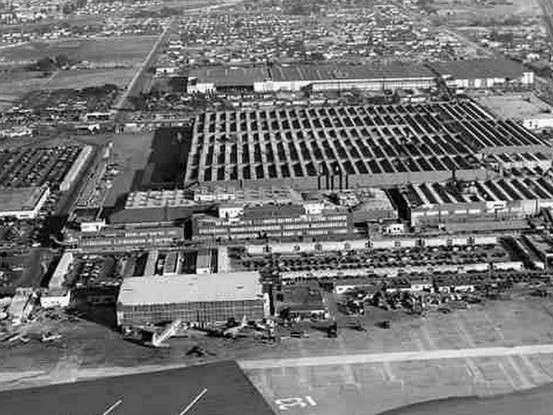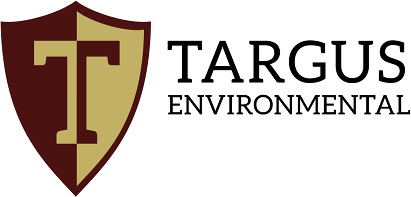Targus was retained to perform an environmental site assessment (Phase I ESA and additional non-ASTM services) of an approximately 62-acre property formerly used for aircraft research, manufacturing, assembly, warehouse, and maintenance purposes from World War II through its subsequent use as part of an airport in the late 1990s. At the time of Targus’ assessment, the property mainly consisted of vacant gravel, concrete, and asphalt parking lots and limited landscaped areas. Targus reviewed numerous prior investigations and underlying historical documentation that identified several areas of concern (AOCs) on the subject property, including but not limited to: 25 former fuel underground storage tanks (USTs), ten former non-fuel USTs, former aboveground storage tanks (ASTs), sumps, clarifiers, underground piping, floor and trench drains, and fuel pumps.
Former geophysical surveys conducted at the subject property did not identify USTs or similar underground features to remain. Based on confirmed removal of the known USTs, ASTs, and other equipment located in the AOCs, and on regulatory agency concurrence that required actions had been completed at each AOC on the subject property, Targus considered prior suspected or confirmed releases associated with the formally documented former on-site operations to be a historical recognized environmental condition.
Targus identified an approximately 100-gallon AST in a subterranean basement on the subject property. Previous soil assessments in proximity to the AST identified evidence of a limited area of petroleum in soil at modest concentrations. Based on Targus’ understanding that removal in accordance with applicable regulations was planned to be included in future site preparation work in advance of construction, the demonstrated presence of a limited area of low concentrations of petroleum in soil around the AST was considered to be a de minimis condition.
The property was located within an area of known regional groundwater solvent contamination resulting from historical industrial land uses designated by the United States Environmental Protection Agency as a National Priorities List (NPL, or “Superfund”) site. Targus reviewed previous investigations that documented elevated concentrations of trichloroethene (TCE), tetrachloroethylene (PCE), and hexavalent chromium in groundwater. The Regional Water Quality Control Board (RWQCB) had issued a series of No Further Action (NFA) letters determining that known remaining soil contamination at the property was no longer a threat to groundwater quality, and therefore, further cleanup was not necessary. Based on prior groundwater monitoring activities undertaken at the subject property, intrinsic protectiveness for future occupants, and regulatory concurrence reflected in the NFA letters, Targus concluded that the known groundwater contamination was a controlled recognized environmental condition.
Targus reviewed previous soil and soil gas investigations at the subject property that identified elevated concentrations of total volatile organic compounds (VOCs) in soil. Subsequent soil remediation activities conducted at the property resulted in issuance of the aforementioned NFA letters stating that there was a low potential for residual contamination to contribute to the larger Superfund site. Hexavalent chromium was not detected above soil screening standards and the RWQCB agreed that the areas of the subject property included in the soil investigation did not constitute significant potential to be a source of hexavalent chromium affecting the regional plume; however, the agency did not issue a NFA determination regarding the chromium based on the necessity for further evaluation off-site. In consideration that soil conditions at the property were known to the agency, were considered to be protective, and that no enforcement or similar regulatory mandates were expected, Targus concluded the demonstrated low concentration of chromium in soil was a de minimis condition.
Additional soil gas surveys across the main portion of the subject property at proposed building locations were also reviewed by Targus. These surveys included a Human Health Risk Assessment using the Johnson & Ettinger model with state-default parameters, concluding that no unacceptable indoor inhalation exposures were indicated for the planned future buildings. Moreover, Targus noted that vapor concentrations measured were lower than soil vapor concentrations previously considered by the regulatory agency to be acceptable and warranting issuance of the aforementioned NFA determinations. Targus considered the known remaining solvent contamination is soil and soil vapor to be a controlled recognized environmental condition subject to groundwater use restrictions based on inclusion within the NPL plume.
Targus recommended following the procedures and recommendations outlined in a Soil Management Plan (SMP), including proper removal of the aforementioned tank remaining in the sub-grade vault. The recommendation to implement the SMP was also made in anticipation that unknown features and materials may be encountered during ground preparation. Uncertainty regarding the potential presence, nature, and quantity of materials that might be discovered was not considered to present a business environmental risk since the possibility of various subsurface encounters had been appropriately accounted for in the project budget and schedule.
Targus also noted that an unknown quantity of transite pipe presumed to contain asbestos was identified during an environmental summary of multiple previous subsurface assessments. Targus recommended the management, abatement, and/or removal of asbestos-containing materials (if encountered during grading/ development activities) by a state-licensed abatement contractor in accordance with applicable local, state, and federal regulations. Uncertainty regarding the quantity and asbestos content of transite piping potentially located beneath the subject property was not considered to present a business environmental risk due to Targus’ determination that this possible eventuality had also been accounted for in the project budget.
Based on the comprehensive assessment provided by Targus, the conservative capital partner joined and funded the joint venture.

